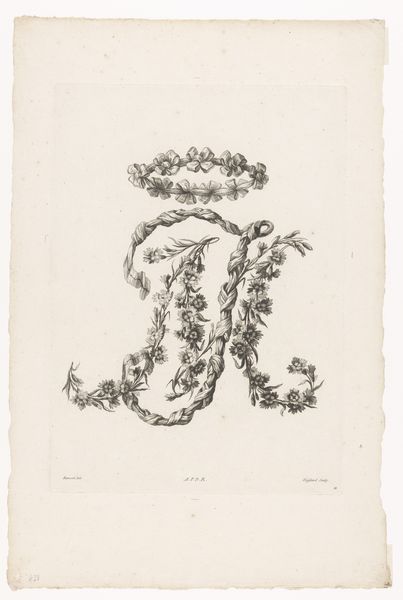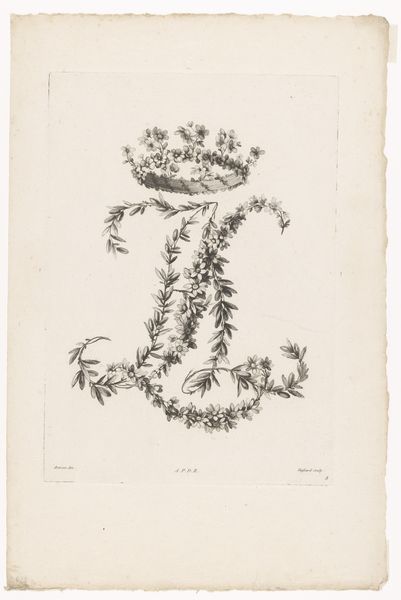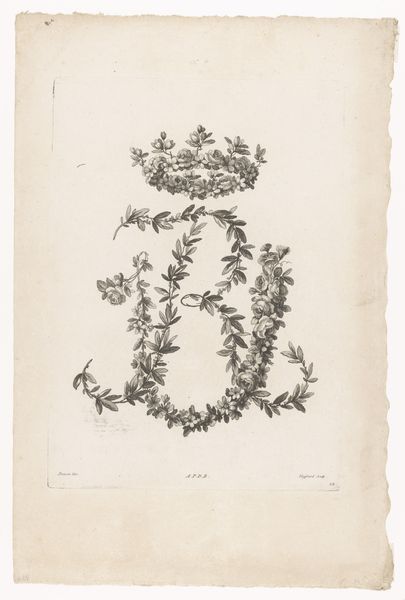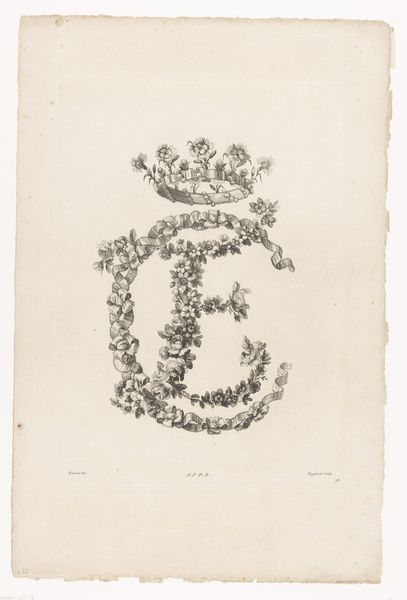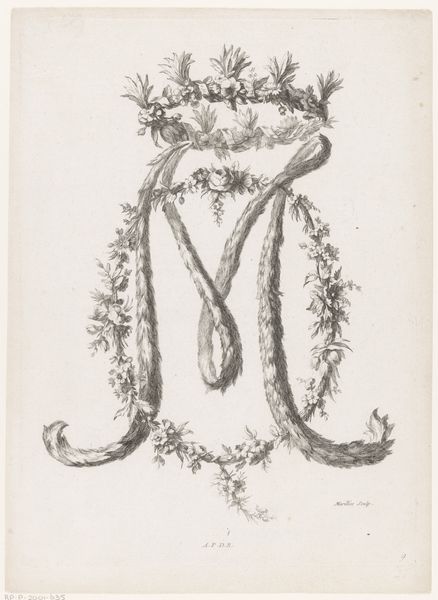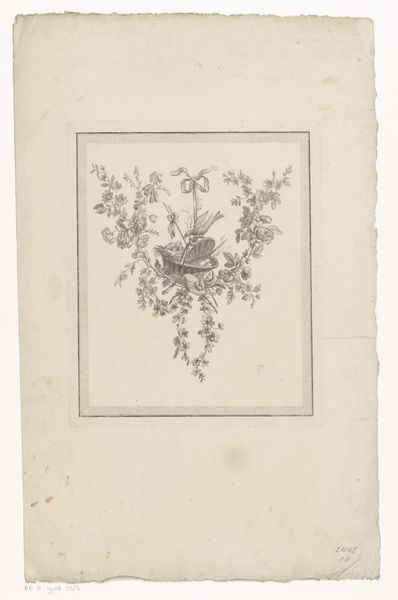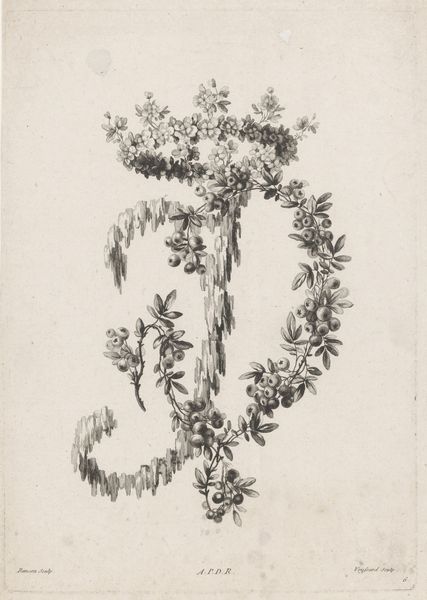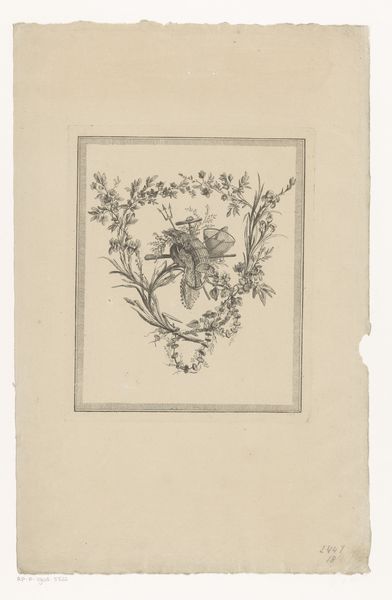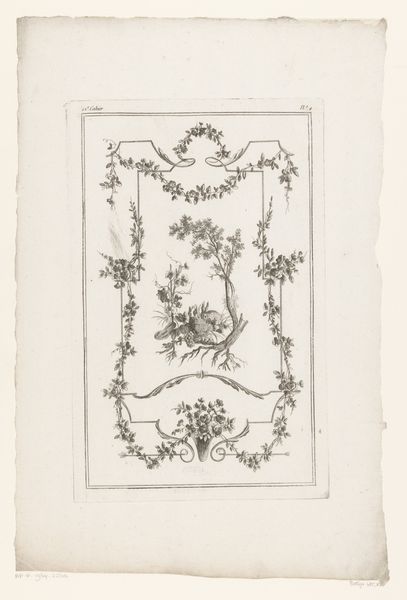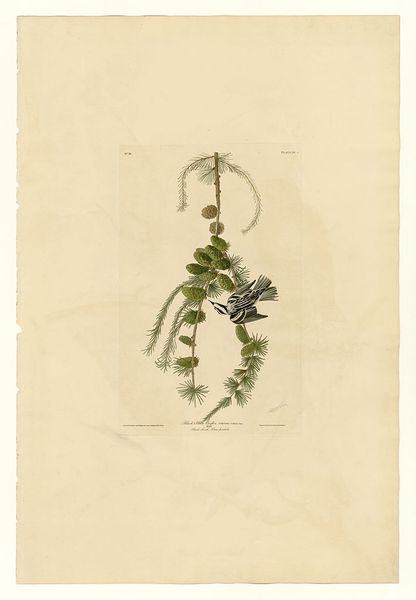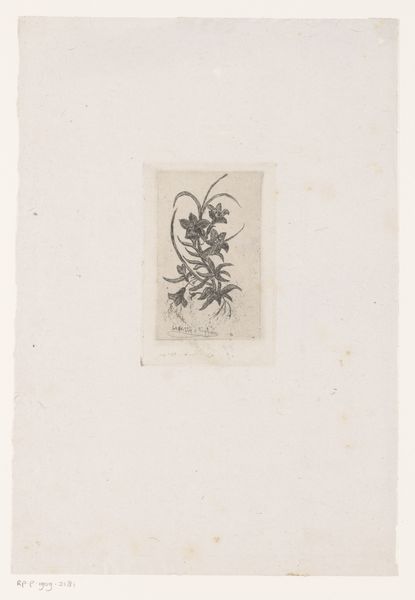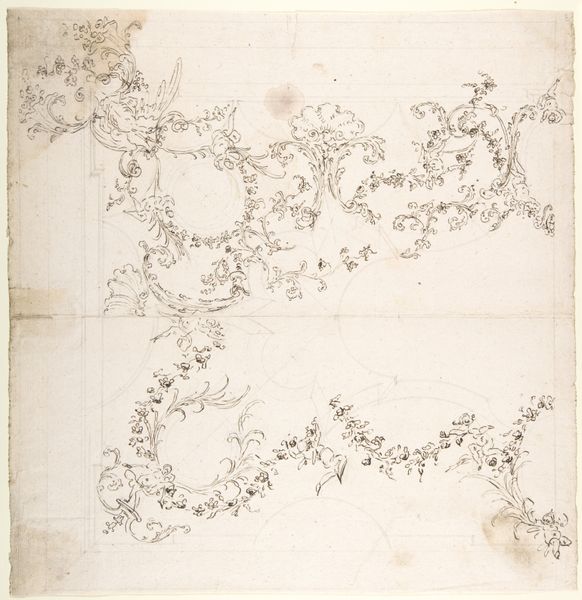
Dimensions: height 330 mm, width 235 mm
Copyright: Rijks Museum: Open Domain
Etienne Claude Voysard created this monogram using etching techniques sometime between 1776 and 1812. During this period, Europe's aristocratic societies used personalized monograms to signify lineage, taste, and social standing. The intertwined floral and ribbon design elegantly merges nature with symbols of refinement. In the 18th century, these decorative symbols played a crucial role in constructing and communicating one's identity, especially within elite circles. Voysard, as an engraver, catered to these needs, crafting symbols that served as emblems of personal and familial pride. While this particular monogram represents a specific individual or family, it also speaks to broader themes of identity. It suggests an emotional connection through the beauty and delicacy of its floral elements and speaks to the desire to create a lasting personal legacy. It reflects the societal values of the time.
Comments
No comments
Be the first to comment and join the conversation on the ultimate creative platform.
